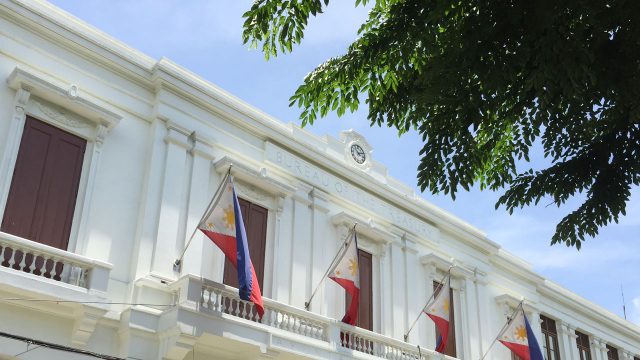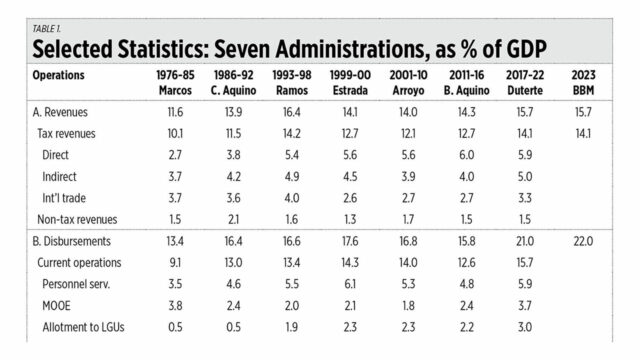Demi Moore on full vulnerability, Selena Gomez on film focus, Kevin Costner frets about financing
CANNES, France — Movie star Demi Moore said the vulnerability required for her role in body horror film The Substance, which premiered at the Cannes Film Festival on Sunday, was both demanding and exciting.
Ms. Moore stars as Elisabeth, an ageing TV fitness instructor a la Jane Fonda who signs up for a mysterious medical regime called The Substance that promises to create the perfect version of herself — played by Margaret Qualley of Drive-Away Dolls.
The role requires Ms. Moore, 61, to be completely naked as well as transform into a deteriorating old woman through prosthetics.
“All of it at different times had moments that were challenging,” she told Reuters in an interview. “The level of vulnerability that this role called for on all the different levels — emotionally, physically — were as demanding as it was exciting because it was really pushing me to step out of my comfort zone,” said Ms. Moore.
Critics were positive on Ms. Moore’s performance, with entertainment website Variety calling it “nothing short of fearless” and The Hollywood Reporter praising how she “imbues her character with a visceral desperation.”
This year’s festival marks the first time in more than a quarter-century that Ms. Moore, who became a sex symbol through films like Striptease in the 1990s, was at the festival.
For Ms. Qualley, 29, having to portray the so-called perfect version of a woman’s body was a weird experience. “She is meant to be perfect, but she’s probably like the least beautiful character I’ve ever played because she’s heartless,” she said.
French director and writer Coralie Fargeat said that her goal was to explore women’s toxic relationships with their bodies and how they are taught that their worth is tied to their appearance. “The way I wrote the movie really sticks to what we experience as women with our bodies. So, it’s the way our body is seen, but also the way we see our own body,” she said.
SELENA GOMEZ RELIEVED FOCUS ON EMILIA PEREZ
Selena Gomez said that she was relieved focus had shifted to her role in the new Mexican cartel musical Emilia Perez rather than her personal life, the singer told Reuters on Sunday.
“It’s a relief. I’d rather somebody say I did a terrible job than talk about my personal life. So, I feel very proud,” Ms. Gomez said at the Cannes Film Festival a day after the premiere of the film, which received a standing ovation for nine minutes.
The former Disney star added that she made up just a small part of the “incredible masterpiece” that is Emilia Perez, which also stars Zoe Saldana and Karla Sofia Gascon.
The film directed by Jacques Audiard about a Mexican drug lord who transitions from male to female and starts a nonprofit dedicated to finding the bodies of disappeared people, is in the running for the festival’s top prize, the Palme d’Or.
Ms. Gomez, who also co-stars with Steve Martin and Martin Short in the Hulu streaming series Only Murders in the Building, is the most-followed woman on Instagram with 428 million followers. Such a large following puts her life under intense public scrutiny and generates headlines that speculate about her personal relationships as well as mental and physical health.
The singer who has posted candidly about having lupus and bipolar disorder told broadcaster NBC’s Today show this month that she has decided to limit comments on her account to only friends as a way to set boundaries.
COSTNER FRETS ABOUT FINANCING FILM
Kevin Costner premiered his film Horizon: An American Saga at the Cannes Film Festival on Sunday night, aiming to make it into a four-part series even though he’s not sure how he’ll finance it.
The actor took out a mortgage on 10 acres of his waterfront property in California to help fund the project, which tells of the challenges faced by settlers expanding the American West in the late 1800s. But the financing still may not be enough.
“This has been so hard. And it’s not over yet,” said Mr. Costner, who started filming on the third chapter before heading to Cannes. “I have to find the money,” he told Reuters in an interview at the festival.
The actor even likens himself to the characters his film portrays. “I’m just like the people going West,” Mr. Costner said. “I have to figure this out because there’s no one really going to help me,” he said about the challenges of making the series.
He stars in, directed, produced, and co-wrote the first film, which covers a 15-year period before and after the 1861-1865 Civil War when white settlers expanded westward in the United States, taking land from American Indians.
Mr. Costner’s previous credits in Westerns include his Oscar-winning Dances With Wolves in 1990 and more recently as the star of the successful five-season TV series Yellowstone.
The 181-minute first part of Horizon: An American Saga, premiering out of competition at Cannes, will be released in North America, the United Kingdom (UK), Spain, Italy and the Netherlands on June 28, followed by part two on Aug. 16.
OSTLUND LAUNCHES DARK AIRPLANE COMEDY
Ruben Ostlund, two-time winner of the Cannes Film Festival’s top prize and last year’s jury president, returned to the festival in southern France to launch his next project on Saturday, a dark comedy about being stuck on a plane with no distractions.
The Entertainment System Is Down will star Kirsten Dunst and Daniel Bruehl as a couple whose relationship is put to the test on the 20-hour-plus plane ride from London to Sydney.
“When the iPhones and iPads are shutting out, they are doomed to deal with their own boredom,” said Mr. Ostlund. “And I’m going to look on this aspect, like taking away entertainment on a societal level, what happens then?”
Examining what happens when the rails come off of polite society has been a particular fixation of Mr. Ostlund’s films, which include Triangle of Sadness, Force Majeure, and The Square.
“I always want to work with people that, you know, push the boundaries of cinema,” Ms. Dunst said at the launch. “That’s always my dream to be a part of working with those type of filmmakers.”
For filming, which is due to begin soon, the team has bought a Boeing 747, where 99% of the film will be set, said Mr. Ostlund.
“We have an airplane, a whole airplane, to not only build a section, but that you can walk from the cockpit all the way to the back so you can do longer tracking shots and really create a feeling of being in the space,” said the Swedish director.
LANTHIMOS: WORLD IS STRANGER THAN HIS FILMS
Director Yorgos Lanthimos, who was at the Cannes Film Festival on Saturday with his second Emma Stone-billed feature in quick succession, Kinds of Kindness, said his often darkly funny films are less strange than what is going on in the world.
Mr. Lanthimos has made a name for himself with absurd black comedies such as The Lobster, where single people transform if they do not find a mate, and the Frankenstein-inspired Poor Things. His new Cannes competition entry is no exception.
Kinds of Kindness is told in three parts, with different storylines but the same actors and themes, including paranoia, power dynamics in relationships, and the threshold for violence.
“Don’t you think that something’s off with the world? Probably more so than the films that we make,” Mr. Lanthimos said at a news conference on Saturday, a day after the film’s premiere. “My work and other people’s work probably reflects the world, and you just try to find the way to do that the best way you can,” he said at the event alongside the film’s stars, including Ms. Stone as well as Jesse Plemons and Willem Dafoe.
Critics were generally favorable to the film: Variety called it a “quizzical concoction bound to baffle and delight in equal measure” while The Guardian described it as a “macabre, absurdist triptych” and gave it four out of five stars.
The film was initially inspired by Caligula, the Roman empire’s eccentric third ruler, and the idea of one man having complete control over another one, said Mr. Lanthimos. However, he could not be drawn on more detail, saying his film-making process was more instinctive than intellectual.
“And I think it’s so much more valid for people that watch the films to have their own view,” he told journalists.
Kinds of Kindness is the third time Ms. Stone and Mr. Lanthimos have teamed up after 2018’s royal drama The Favourite and Poor Things, which picked up several Oscars this year. “I’m drawn to his stories. I’m drawn to his films. I’m drawn to his way of seeing the world and the characters and the way he goes about all of it,” said Ms. Stone.
COPPOLA ON TIMELY MEGALOPOLIS
Francis Ford Coppola did not know how relevant Megalopolis, a sci-fi epic that is an allegory for the fall of the Roman Republic, would become to US politics when he first began developing the concept decades ago, the legendary auteur said at the Cannes Film Festival.
Mr. Coppola wanted to do a Roman epic set in modern America.
“But I had no idea that the politics of today would make that so relevant,” Mr. Coppola told a news conference on Friday, a day after his decades-in-the-making passion project had its world premiere. “Because what’s happening in America, in our republic and our democracy, is exactly how Rome lost their republic thousands of years ago,” said The Godfather director. “Our politics has taken us to the point where we might lose our republic.”
Artists, not politicians, are going to be the answer, he added, because they shine a light on contemporary life.
The film, which is loosely inspired by an attempted coup during the Roman Republic, follows Cesar Catilina, an architect-scientist played by Adam Driver, as he goes head-to-head with the order-loving mayor of New Rome, played by Giancarlo Esposito, in trying to turn his utopian vision into reality.
Mr. Coppola, who started developing the film’s concept in the early 1980s, said there was no word to describe the emotion he felt upon finally seeing the finished product on the big screen. However, the Oscar-winning director of Apocalypse Now, who has often re-edited his work after it has already been released, did not rule out also making changes to his latest film.
“I’ll be here in 20 years, I think,” the 85-year-old said, briefly casting his eyes to the ceiling. “If there’s a way I can make the film a little better, I will try. But I know that I’m done with it because I’ve already started writing another film and that’s a good sign that I’m finished.” — Reuters























